Big Five
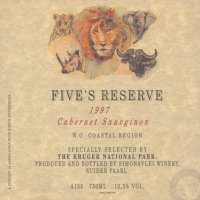 The
Kruger National Park, the biggest in South Africa, is one of the most
repositories of the bird and animal life in the world. For centuries,
the land between the Sabie and Crocodile Rivers was no more than a vast
tract of African savannah. Attempts at permanent human settlement had
mostly failed as mosquito and tsetse fly infestation made life intolerable,
if not perilous. The Stone Age San, the only Africans able to adapt to
the harsh conditions of this untamed environment, given their nomadic,
self-sufficient lifestyle, were first to dwell here. They no longer hunt
in the arid areas of the park, but evidence of their habitation remains
in the form of rock artwork, documenting their survival techniques.
The
Kruger National Park, the biggest in South Africa, is one of the most
repositories of the bird and animal life in the world. For centuries,
the land between the Sabie and Crocodile Rivers was no more than a vast
tract of African savannah. Attempts at permanent human settlement had
mostly failed as mosquito and tsetse fly infestation made life intolerable,
if not perilous. The Stone Age San, the only Africans able to adapt to
the harsh conditions of this untamed environment, given their nomadic,
self-sufficient lifestyle, were first to dwell here. They no longer hunt
in the arid areas of the park, but evidence of their habitation remains
in the form of rock artwork, documenting their survival techniques.
Centuries later, after permanent European settlement, the area became an official hunting ground. This was until President Paul Kruger decided, on 28 March 1898, to create a sanctuary for the diminishing populations of local fauna.
This area was then marked out as Africa's first wildlife reserve, and in 1903 was given the name Sabie Game Reserve. 1926 saw expansion as far as the Limpopo River, as the park, now covering almost 2 million hectares, became the Kruger National Park. The park features excellent drives and trails through both dense bush and dry scrub. It is divided between the Limpopo and Mpumalanga, with the formers region getting the lion's share and extending southwards to the Olifants River and as far north as the Limpopo River.
It is a premier local and international game park, featuring over 250.000 mammalian inhabitants falling into 147 species including all of the "Big Five": 300 black rhino, 2.500 white rhino, 8.000 elephant, 900 leopard, 20.000 buffalo and 2.000 lion, as well as 507 bird, 336 tree, 49 fish, 34 amphibian and 114 reptile species.
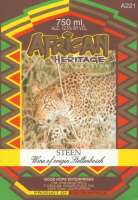 Leopard
(Panthera pardus)
Leopard
(Panthera pardus)
Afrikaans: Luiperd
Weight: Between 60 and 80 kilograms
Height: 70 centimetres at the shoulder
Large carnivore of the cat family, Panthera pardus, widely distributed in Africa and Asia. It is commonly yellow, buff, or gray, patterned with black spots and rings. The rings, unlike those of the New World jaguar, never have spots inside them. Black leopards are commonly called panthers, a name sometimes used for all leopards. They are not a distinct species but merely a colour variant caused by melanism, or excessive pigmentation. Close inspection reveals the typical spotting, which is obscured by the darkness of the background. Leopards are somewhat smaller than lions and tigers; the largest males are about 7 ft (2.3 m) long, including the 3-ft (90-cm) tail. Leopards are solitary, largely nocturnal, and good climbers; they hunt both on the ground and in trees. They prey mostly on small animals such as monkeys, rodents, and birds.
Powerful and agile, the leopard is a deadly and efficient hunter. It stalks its prey, creeps to within a few metres, then leaps or dashes at the victim, which is dispatched by a bite in the neck or smothered by a throat bite. In eastern Africa, the carcass is frequently brought up into a tree to protect it from scavengers. Their most common prey are hoofed animals, but they will eat dogs and monkeys as well. The well-known “black panther,” once thought to be a different species, is actually just a dark leopard.
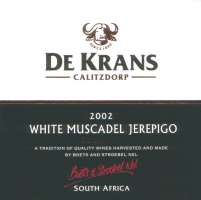 Buffalo
(Syncerus Caffer)
Buffalo
(Syncerus Caffer)
Afrikaans: Buffel
Weight: 800 kilograms.
Height: 1,6 metres at the shoulder
Species of short-haired African ungulate or hoofed mammal, Syncerus caffer. The cape, or African, buffalo may reach 7 ft (2.1 m) in length, weigh 800 kg, and reach a height of 5 ft (1.5 m) at the shoulder. Coat colour and horn shape seem to vary with the animal's habitat, which ranges from high grass savanna to equatorial forest and extends from Lake Chad south to the Cape of Good Hope and from Senegal, on the Atlantic coast, to the Horn of Africa, on the Indian Ocean. Cape buffalo gather in herds of up to a thousand animals; they graze and drink in the early morning and evening and rest during the heat of midday and at night. They are aggressive and powerfully built, and can easily fend off the attack of a lion. They mate in January or February; after a gestation period of 11 months the cow gives birth to a single calf. Its life span is about 16 years.
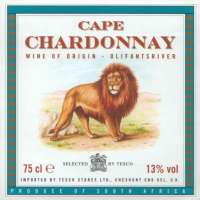 Lion
(Panthera leo)
Lion
(Panthera leo)
Afrikaans: Leeu
Weight: Males 200 kilograms, females as much as 140 kilograms.
Height: 90 to 100 centimetres at the shoulder
Although the lion is a very powerful animal, it reserves
most of its strength for hunting. Lion hunt in groups by stalking then
chasing down their prey at speeds up to 40 miles per hour. They leap on
the prey's back, dragging it to the ground. Once down, they latch on to
the throat until the animal finally gives up. Zebra, wildebeest, and gazelles
are all targeted by lions.
When not hunting, the lion spends its day resting. While on safari, lion
are most often spotted lounging in the grass or high rocks surveying their
territory. The lion lives in prides, numbering up to thirty with the majority
being females and young. A pride can have a range of over 500 square miles.
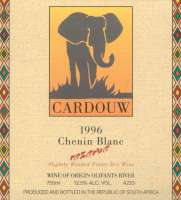 Elephant
(Loxodonta africana)
Elephant
(Loxodonta africana)
Afrikaans: Olifant
Weight: 6000 - 7000 kilograms, calves have a birth weight of approximately
120 kilograms.
Height: 3 metres at the shoulder.
The bull is easily distinguishable from the cow by the shape of the head.
The bull has a more rounded forehead whereas the cow's forehead is straighter
and more angular.
Elephants are known for their keen sense of smell and
hearing, compensating for their poor eyesight. Even though they are the
largest and most powerful land mammal, they are gentle and peaceful. Females
live in family units. Young males are driven from the family when they
reach puberty to live in bachelor herds. Adult males live alone joining
family units only to mate. The lifespan of an elephant lasts between 50
and 70 years.
Elephants are vegetarians, feeding on grass, foliage, fruit, branches
and twigs. Its massive body requires 200 to 600 pounds of food per day
and around 50 gallons of water. Herds can cover distances of over 50 miles
a day, but never move far from water. Both male and female African elephants
have tusks. These tusks can weigh 50 to 100 pounds or more and continue
to grow throughout the elephant’s lifetime. The tusks are used as
tools for carrying and clearing. The teeth are used to grind their food.
When the elephant loses all its teeth, it can no longer feed and starves
to death. The trunk has a multitude of functions. It is used for drinking
and eating, washing, carrying, scent, and communicating with other elephants.
During pregnancy, the mother carries her baby almost two years before
delivery. At that time, the birth takes place in privacy attended by two
other females. The young are aggressively defended.
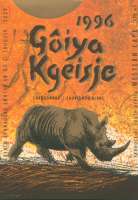 Black
Rhinoceros (Diceros bicornis) Also known as the Hook-lipped
Rhinoceros
Black
Rhinoceros (Diceros bicornis) Also known as the Hook-lipped
Rhinoceros
Afrikaans: Swartrenoster
Weight: 900 - 1000 kilograms.
Height: 1,6 metres at the shoulder
White Rhinoceros (Ceratotherium simum) Also
known as the Square-lipped Rhinoceros
Afrikaans: Witrenoster
Weight: As much as 2000 kilograms.
Height: 1,85 metres at the shoulder
There are two species, the white rhinoceros and the
black rhinoceros. The white rhinoceros' name comes from the African word
"weit", meaning wide mouthed. They are sedentary animals and
graze for food. The white rhinoceros is larger than the black. After the
elephant, it is the largest of land animals. It is a social animal, living
in families of two to five.
The black rhinoceros is the smaller species. The black rhino is more of
a browser for food, found in areas from savannah to mountain forests.
The front horns measure up to three feet and the rear horn can be up to
two feet. The value of these horns on the black market has led to the
rhinoceros' near extinction from poaching.
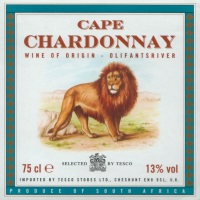
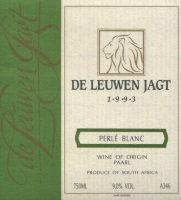
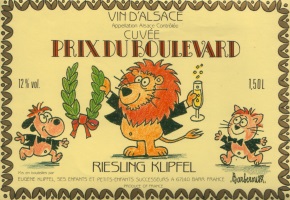
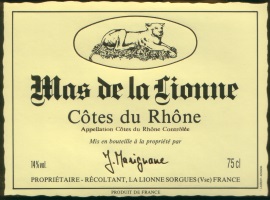
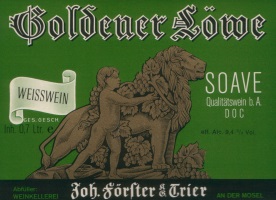
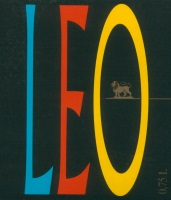
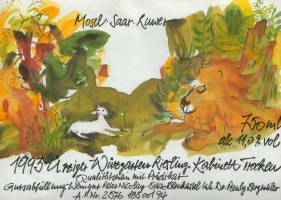
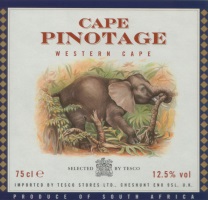
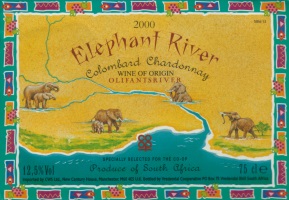
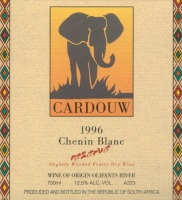
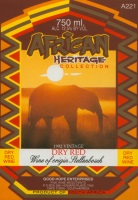
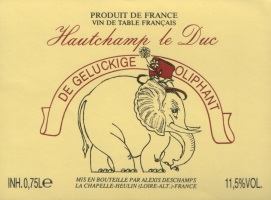
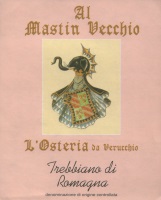

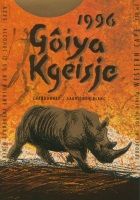
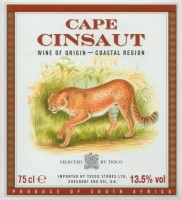

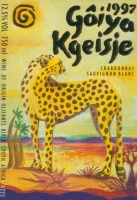
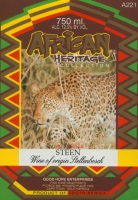
© All rights reserved. The Wine Labels World.